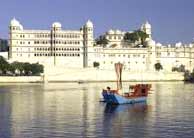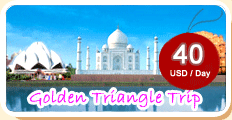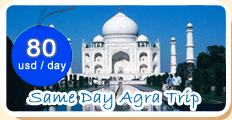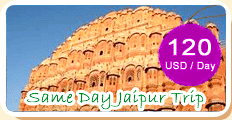
Udaipur Tour

 Udaipur is known as the Venice of the east. It is also called the city of lakes. The Lake Palace on Jag Niwas Island in the middle of Pichola Lakes is the finest example of its architectural and cultural explosion. The grand City Palace on the banks of the lake compliments the palace along with the Monsoon Palace (Sajjan Garh) on the hill above. Udaipur is also the centre for performing arts, craft and its famed miniature paintings.The Shilp Gram festival is a center of attraction during the season.
Udaipur is known as the Venice of the east. It is also called the city of lakes. The Lake Palace on Jag Niwas Island in the middle of Pichola Lakes is the finest example of its architectural and cultural explosion. The grand City Palace on the banks of the lake compliments the palace along with the Monsoon Palace (Sajjan Garh) on the hill above. Udaipur is also the centre for performing arts, craft and its famed miniature paintings.The Shilp Gram festival is a center of attraction during the season.Maharana Udai Singh II founded Udaipur in 1568 after his citadel Chittorgarh was sacked by Mughal Emperor Akbar. The legends says that Udai Singh was guided by a holy man meditating on the hill near Pichola Lake to establish his capital on this very spot. Surrounded by Aravali Ranges, forests and lakes this place was less vulnerable than Chittorgarh. Maharana Udai Singh died in 1572 and was succeeded by Maharana
Pratap who valiantly defended Udaipur from subsequent Mughal attacks. Maharana Pratap is the most revered Rajput icon and gallantly fought the Mughal at the Haldighati in 1576. Mewar continuously defied foreign invaders and has a history of bloody battles until the British intervention in the nineteenth when a treaty was signed to protect Udaipur. Upon independence Udaipur merged in the union of India.
CITY PALACE
City Palace, Udaipur TravelCity Palace towers over the Pichola Lake. Maharana Uday Singh initiated in the construction of the palace but succeeding Maharanas added several palaces and structures to the complex retained a surprising uniformity to the design. The entry to the Palace is from the Hati Pol, the Elephant gate. The Bari Pol or the Big gate brings you to the Tripolia, the Triple gate. It was once a custom that the Maharana would weigh under this gate in gold and silver, which was distributed to the populace. It is also now the main ticket office.
FATEH PRAKASH PALACE
It's like being cocooned in authentic royal luxury at the Fateh Prakash Palace, the grand heritage palace of the HRH group. The warmth of royal hospitality greets you as you walk along the corridors lined with large paintings of the Mewar school that flourished in the seventeenth through nineteenth century.
THE LAKE PALACE
Lake Palace, Udaipur Travels & ToursThe Lake Palace is located on the Jag Niwas Island and covers the whole of 1.5 hectare of the island in the middle of the Pichola Lake. Built by Maharana Jagat Singh in 1743 it was meant as a royal summer palace and now converted in to a five star palace hotel. It is a magical palace and its image in the middle of the lake is like a leaf straight out of a fairy tale book with an excellent taste of intricate craftsmanship and the ethnic themes using the textiles and handicrafts all over highlight the beauty that is simply beyond compare the lake around makes a pleasant murmur with its rippling waves and lapping that adds to the mesmerising moments.
LAKE PICHOLA
Lake Pichola, Udaipur Travels & ToursPichola Lake derives its name from Pichola Village was submerged and Maharana Udai Singh enlarged the lake after he founded the city. He built a masonry dam known as Badipol and lake is now 4 km long and 3 km wide. This picturesque lake encloses the Jag Niwas Island and the Jag Mandir. And, the City Palace extends along its eastern banks.
FATEH SAGAR LAKE
This delightful lake, bordered by hills and woodland was constructed by Maharana jai Singh to the north of Lake Pichola. It is an artificial lake dug up in 1678, reconstructed by Maharana Fateh Singh A canal links the two, via Swaroop Sagar and Rang Sagar Lakes. The beautiful Nehru Island as well as an islet bearing a solar observatory rises from the lake.
JAISAMAND LAKE
Jaisamand Lake, Udaipur TravelMaharana Jai Sigh had built this picturesque artificial lake. It the second largest lake in Asia. The lake has elegant step leading to the water and marble Chhatri (cenotaphs) on its bank and a small Shiv temple marks the grace of the lake. On either side are the palaces built for the king favourite queens. The local tribe for Bhils still inhabit the island.
RAJSAMAND LAKE
On the way to Kumbhalgarh lies their royal lake with a magnificent dam created in the 17th century offers a spectacular views of the sunset adorned by beautiful Torans [arches] and Chhatris And number of attractive pavilions. Stunning sculpture and Sanskrit verses are vividly inscribed in store a small counterpart of Nathdwara.
CITY PALACE MUSEUM
City Palace Museum, Udaipur TravelThe main part of the palace is now preserved as a museum displaying a large and diverse array of artefacts. Down steps from the entrance is the armoury museum exhibiting a huge collection of protective gear, weapons including the lethal two-pronged sword. The City Palace museum is then entered through the Ganesh Deori meaning the door of Lord Ganesh.
SHILPGRAM MUSEUM
Literally meaning a "Craftsmen's Village" is a living ethnographic museum depicting the enormous diversities in craft, art & culture between various Indian states, but the exquisite terracotta work mainly in dark red and dark brown sand material along with the wooden carvings are the forte of this ethnic village . Shilpgram comprises 26 huts set in 70 acres of natural surroundings at the foot of the Aravali Hills.A colourful craft festival during winter seasons to the whole set up induces viatanity and zeal.
AHAR MUSEUM
Located about 2 kms east of Udaipur is an impressive cluster of cenotaphs of the Maharanas of Mewar. There are about nineteen cenotaphs of Maharanas cremated there. The most striking cenotaph is that Maharana Amar Singh, who reigned from 1597 to 1620. Nearby is also Ahar Museum, where on display is limited but very rare earthen pottery.
VINTAGE COLLECTION OF CLASSIC CAR MUSEUM
The collection within the grounds of the Garden Hotel comprises a variety of classic and interestingly rare transportation vehicles; some stately and vintage like Cadalec, Chevalate, Morais etc., while the others are sleek and fast .
EKLINGJI TEMPLES
The temple is situated 20km from Udaipur Eklingji is famous for its 108 temples complex. Built on a shore of a small lake surrounded by hills it is also known as Kailashpuri or the abode of Shiva.
It was built by Bappa Rawal on the side of 72 roomed jain temple which had a four faced idol of Adinathji , the first Jain saint. First built in 728AD , the main temple is made in white marble. Made of black marble , the four faced image of Mahadev (an icon of Lord Shiva) is worshipped as Eklingji.
NATHDWARA
Nathdwara situated 48km north east of Udaipur , it was built in the 18th century. Also known as the Apollo of Mewar it is famous as the residence of Shri Nathji - one of the popular icons of Lord Krishna . The idol of Shri Nathji is made from a large black stone and has several animals engraved on it. Nathdwara is famous for handmade terracottas and pichhwai paintings. *The largest known festival of Nathdwara is Annakuta , which is a continuation of the traditional worship of Govardhana Hill.
JAGAT TEMPLES
Jagat, better known as the Khajuraho of Rajasthan, is famous only for its Ambika Mata Temple built in 961AD. The temple is small in size but quite a detailed one and dates back to the Pratihara period. The temple has a towered altar, a mandapa (columned prayer hall) with projections on two sides and a small porch in front. The mandapa has decorative windows on the north and south edged by carved and ornamented panels.
The roof has additional alcoves that rise in the form of a pyramid in a number of eavelike rows. The porch is also protected by an angled eave. The beautiful engravings have also amply compensated the doorway that leads to the altar that houses a small Ambika image. The ceiling panels of the prayer hall and the porch are carved with multi-lobed motifs and pendant medallions. The mandapa also has a carved panel of the dancing Ganesha.
NAGDA
Nagda or Naga-hrada was the ancient capital of Mewar and was founded by Nagaditya in the 6th century. The rulers of Mewar had ruled from Nagda for seven generations till the time of Bappa Rawal (728AD). Nagada had not been left alone by the Muslim invaders and was plundered by Altamash between 1222 and 1229 AD.
The ancient capital of Nagda now only has the ruins of some Vishnu, Shiva and Jain temples to prove that it wasn't behind when speaking of architecture. The most important temples that have survived the test of time are the Sas-Bahu pair and are said to be as old as eleventh century. The Jain temple toAdbhutji (the peculiar one) built during Rana Kumbha's rule was so named for the strange idol within its shrine. The nine-foot high odd image in the temple is that of the Jain saint Shanti Nath.
RIKHABDEV PILGRIMAGE
Rikhabdev is famous only for its temple dedicated to Lord Rikhabdev, the first Jain Tirthankara. Rikhabdev is also claimed by the Vaishnavas as the eighth Avatar of Lord Vishnu. The temple belongs to the Svetambara sect of the Jains but at present is under the control of the State of Rajasthan. The temple is better known as Kesariyaji, derived from kesar or saffron that is put on the forehead of the idol of the Lord. The tribals, Bhils, who worship the idol, call it Kalaji due to the black image of the idol. The town of Rikhabdev is also known as Dhulev as the Bhil Dhula had once protected the idol and worshipped it at this place. The Bhils are very loyal to this Lord and always take an oath by uttering the name of Kalaji.
























